If you buy through our links, we may earn an affiliate commission. This supports our mission to get more people active and outside.Learn about Outside Online's affiliate link policy
The 9 Best Men’s Ski Pants and Bibs of 2026
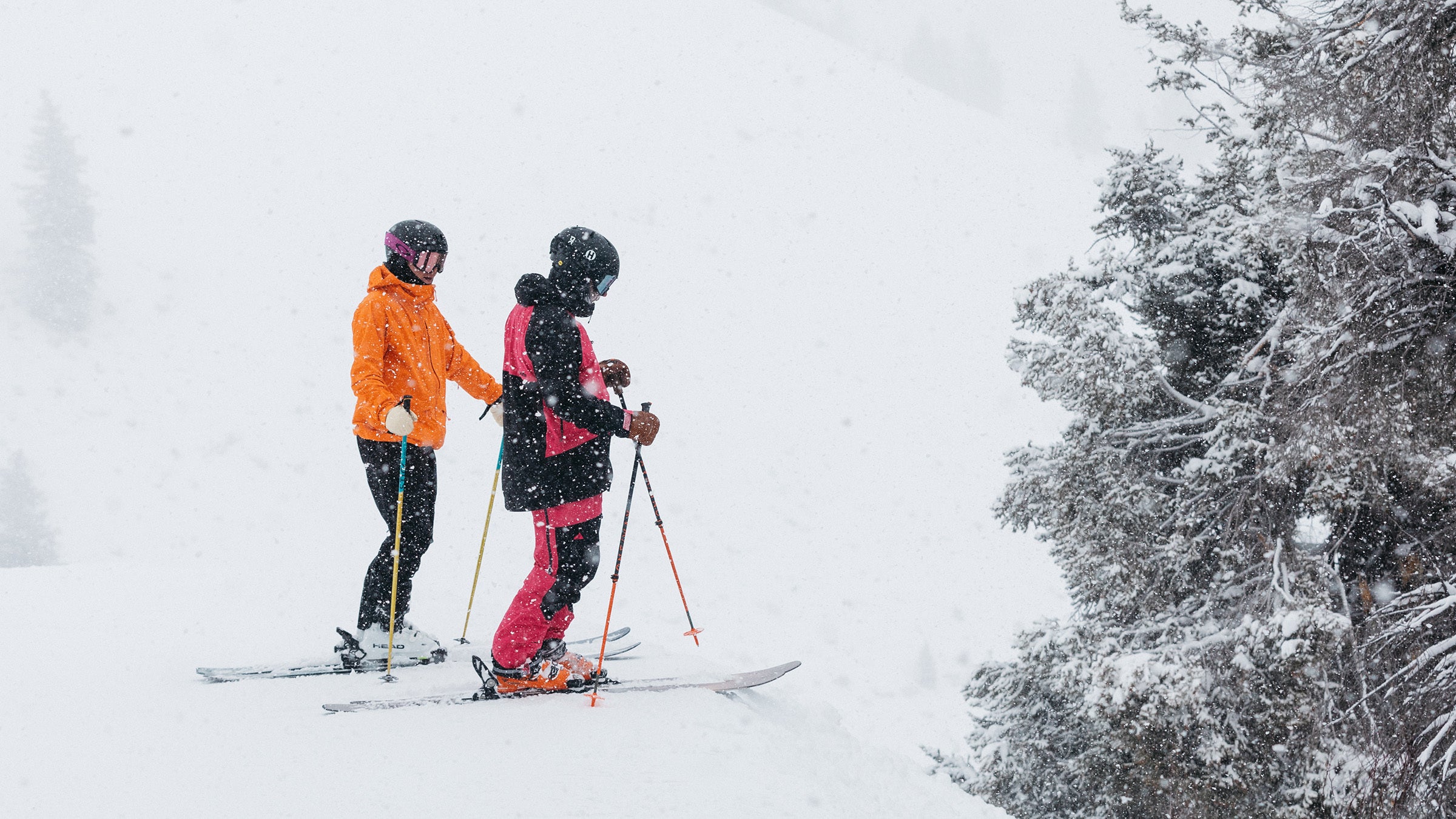
(Photo: Ray J. Gadd)
Table of Contents
Ski jackets usually get all the attention, but we think it’s more important—and tougher—to find a great pair of ski pants. Your legs do a lot more moving while skiing than your upper body, so if your ski pants or bibs are too tight, too baggy, or just don’t fit right, you are going to notice. Plus, pants spend more time in contact with other surfaces: sitting on the chairlift, kneeling in the snow, bashing into branches or ski edges. Durability and weather resistance matter more than with jackets. Over the last few winters, we’ve tested dozens of winter bottom layers to narrow down our list to the ten best men’s ski pants and bibs right now.
Best Men’s Ski Pants: At a Glance
- Best Men’s Ski Pants Overall: Flylow Baker Gore-Tex 3L Bib ($620)
- Best Value: Rossignol Outerlimits Bib ($280)
- Best Insulated: Stellar Insulated Shell Pant ($629)
- Most Durable: Norrøna Ioften Gore-Tex Pro Pant ($799)
- Best Lightweight: Peak Performance 3L Shell Pant ($650)
- Best for Storm Skiing: Stio Figment Bib ($499)
- Best for Variable Weather: Head Kore Nordic Pant ($500)
- Best for Backcountry: Montane Nordes ($325)
- Best Fully-Featured Backcountry Bib: Mountain Hardwear Mythogen Bib ($700)
The Reviews: The Best Men’s Ski Pants and Bibs
Best Men’s Ski Pants Overall
Flylow Baker Gore-Tex 3L Bib
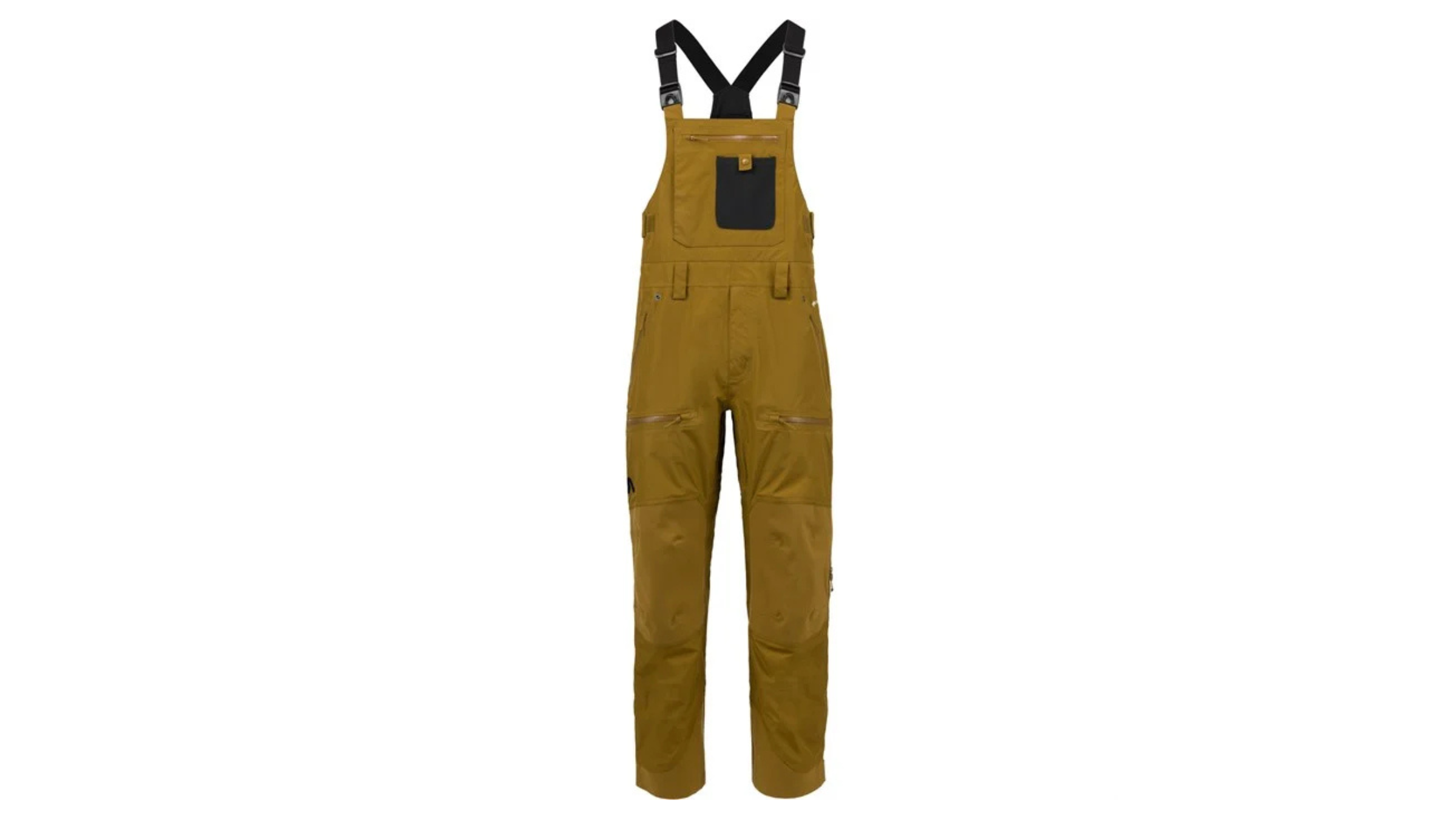
Sizes: S-XXL
Insulation: None
Weight: 1.87 lbs (size medium)
Pros and Cons
+ Wide size and length range
+ Stylish look and fit
+ Recycled and upcycled materials
– A bit heavy
The designers keep tweaking, and the Baker keeps getting better. New this year is a Gore-Tex membrane, adding improved waterproofing and breathability to what was our favorite resort-focused bib in 2025. The relaxed fit has a nice casual look, but isn’t so baggy that the cuffs catch on bindings or feel cumbersome on the uphills. Add the better breathability overall and the generous inner-leg vents, and we found the Baker well suited to a day of earning turns on the skin track. Reinforcements at the knees and cuffs (1,000 denier at the boot cuff) showed no signs of wear after two seasons of use, and the rest of the pant’s material is a moderate-weight recycled polyester that proved protective enough for the demands of chairlift riding.
Seven zippered pockets–two in the bib upper, two hand, two thigh, and a back—make it easy to stay organized and carry all the essentials. The chest pocket, in particular, is handy for carrying a beacon. “These bibs are awesome,” said our 6-foot, 185-pound tester who wore a size large. “A bit heavier than what some would use in the backcountry, but I’d rather have the burliness. A great all-around option.”
Best Value
Rossignol Outerlimits Bib
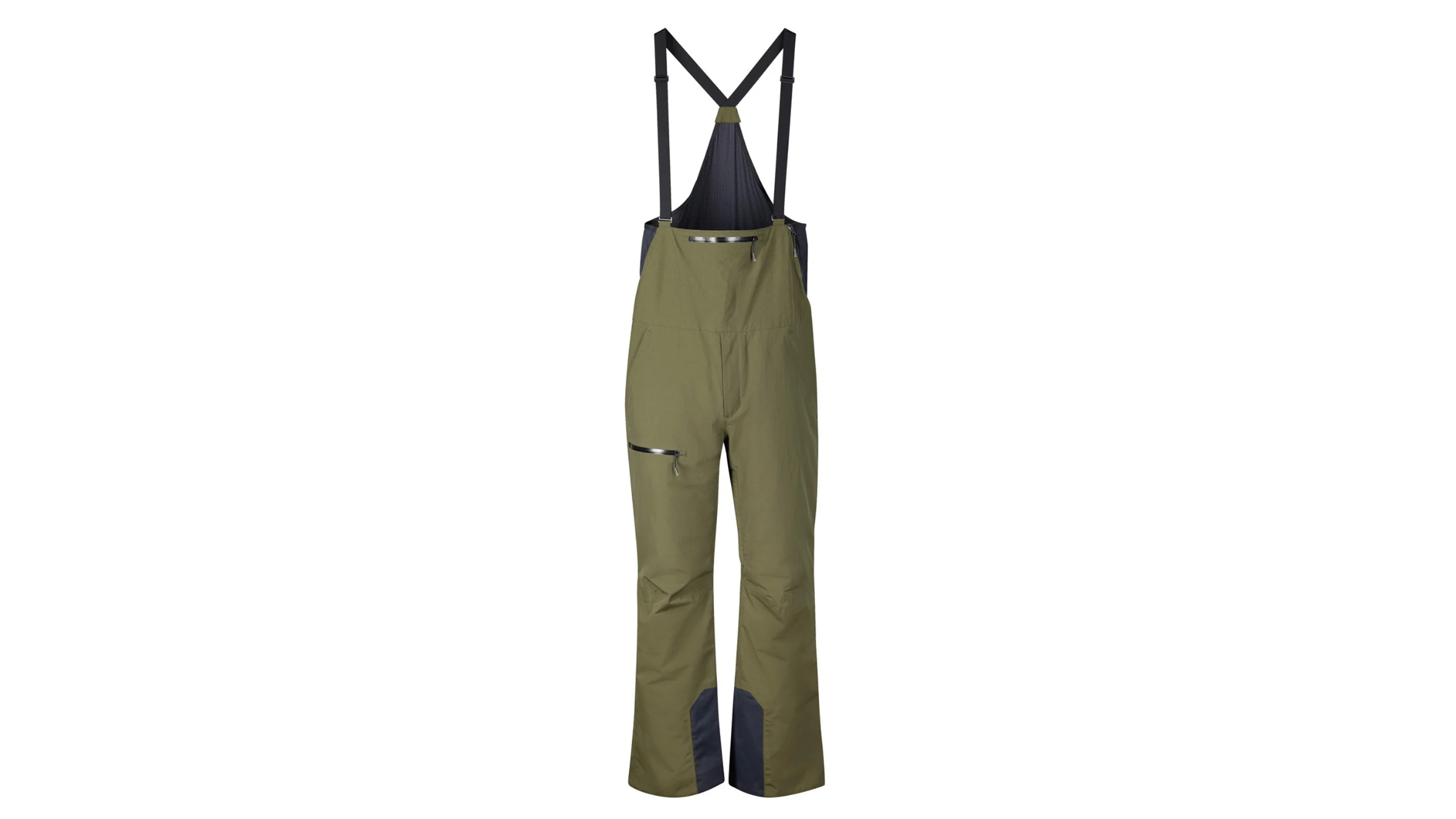
Sizes: S-2XL (men’s); XS-XL (women’s)
Insulation: Primaloft Black recycled synthetic
Weight: 1.8 lbs
Pros and Cons
+ Versatile pocket layout
+ Thoughtful features
+ Affordable
– No waist adjustment
This budget-friendly number boasts many clutch features we rarely see on bibs. The hand pockets have a fleece lining, which is a cozy touch for hanging out, especially apres ski. “They’re the right height for keeping hands warm and they’re ideal for holding a beer,” said one tester who works as a ski instructor on Vancouver Island. (There’s also a single cargo pocket and a bib pocket.) A dedicated relief zipper makes pit stops simpler than on most bibs, and the combination of a knee-to-armpit side zip and buckled shoulder straps makes changing easy.
Testers said the hybrid bib design helped them regulate their temperature The pant portion is protected by a waterproof-breathable material and is stuffed with 40 grams of synthetic insulation. It was just right most of the time. With the same layering, we were comfortable from below-zero skiing in the Canadian Rockies to temperatures right around freezing at Whistler. The upper part of the bib is just lined, which made it more breathable, and added utility when working harder, like banging out bump runs or hiking a bootpack. We wish the cuffs were reinforced with tougher fabric, and there’s no belt loops or waist adjustment. These were small knocks for a versatile and cozy pair of pants we found ourselves reaching for on cold ski days. The fact that you get all that for less than $300, makes these men’s ski pants a steal.
Best Insulated Ski Pant
Stellar Insulated Shell Pant
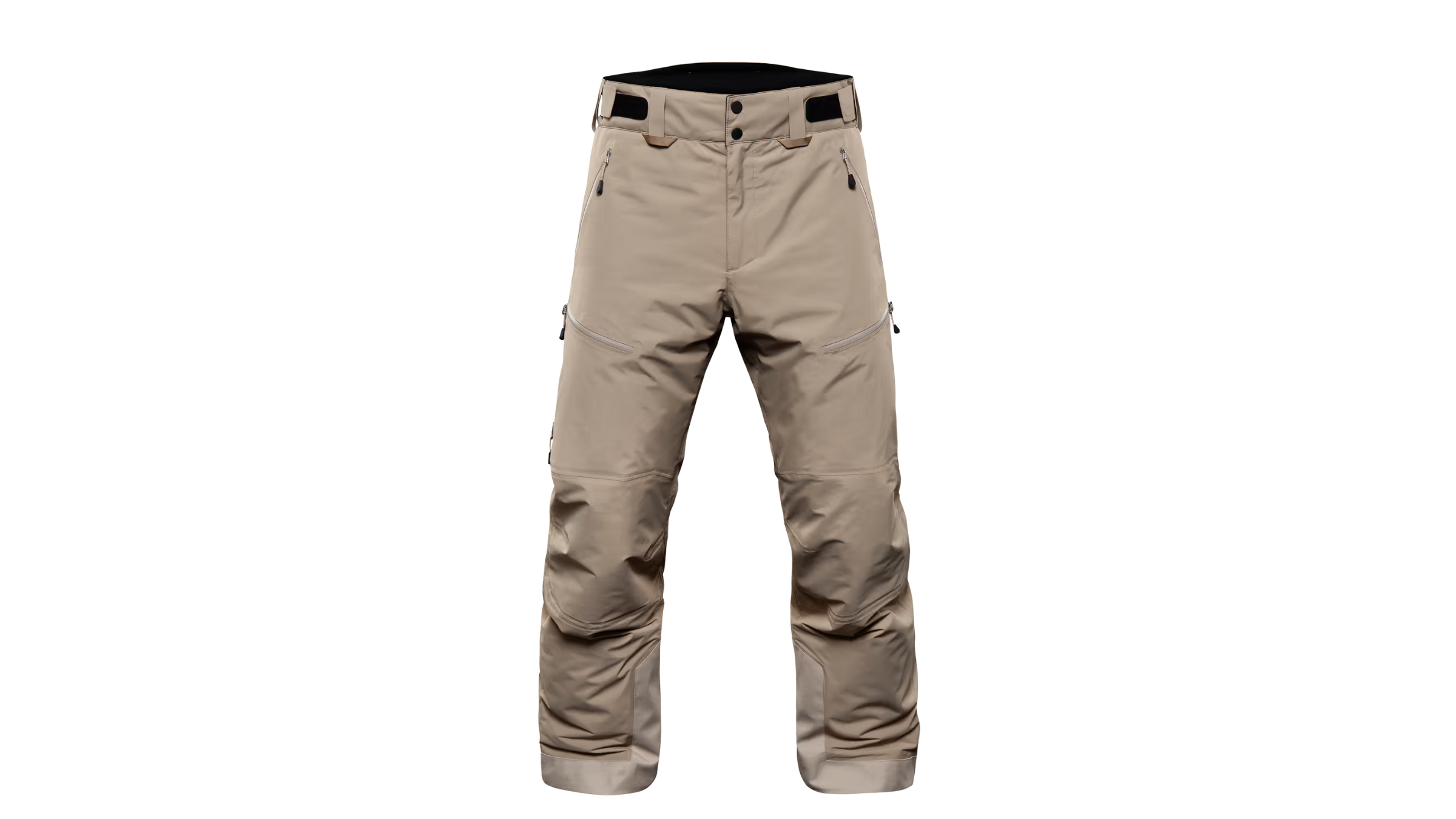
Sizing: men: S-XXL
Insulation: Primaloft Silver 60 g/m
Weight: 1.8 lbs
Pros and Cons
+ Waterproof and insulated
+ Comfortable waist design
– Only available online
Stellar’s choice of a utilitarian name actually says a lot about the Insulated Shell Pant. First up: insulated. Stuffed with PrimaLoft Silver P.U.R.E, the synthetic fibre is produced with significantly fewer carbon emissions. These men’s ski pants boast a feel-good, versatile amount of warmth. On a sub-zero day at Jackson Hole, a tester’s butt was spared from freezing to the frosty chairs and his thighs stayed comfortably warm while pinning it down the groomers.
Second: shell. The outer fabric is a 100 percent post-consumer recycled Japanese two-layer with a waterproof and highly breathable membrane, also made in Japan. “I skied in the rain at work and was one of the few who came in at lunch still dry,” said one tester, a realtor who volunteers for an adaptive ski program on Vancouver Island. He normally runs hot, but he found the thigh-length ventilation zippers allowed him to control his internal temperature, while the mesh backing kept snow out of his pants.
Finally: pant. They’re comfortable, while remaining protective. A fleecy strip runs around the waist, Velcro tabs adjust the width, a bungy section provides stretch, and a high back never leaves skin exposed. Go ahead, judge these pants by their name.
Most Durable Ski Pants
Norrøna Iofoten Gore-Tex Pro Pants
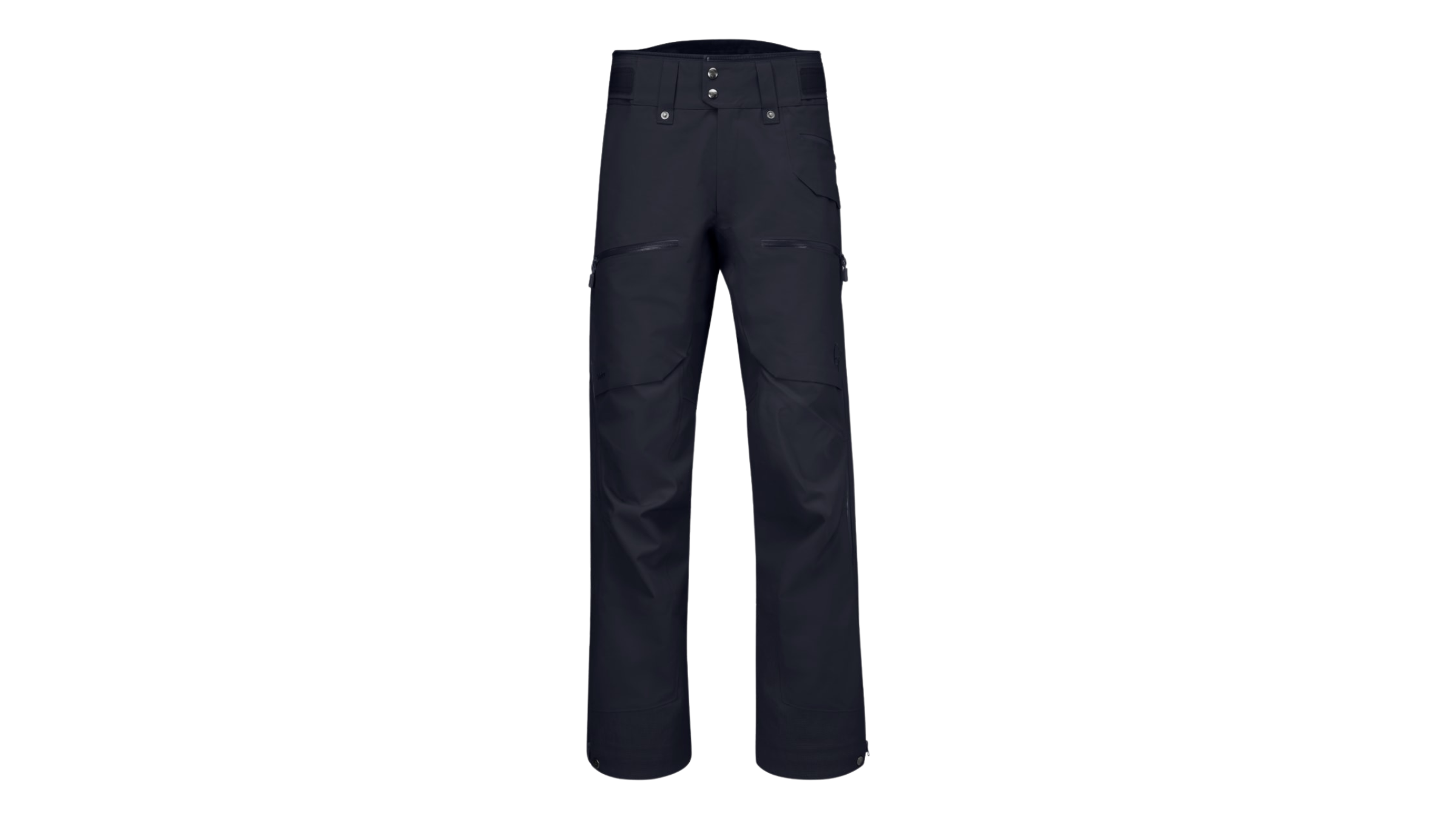
Sizing: S-XXL
Insulation: none
Weight: 1.9 lbs
Pros and Cons
+ High quality build feels luxurious
+ Ergonomic design allowed unrestricted movement
– Heavy for a shell pant
When storms blew into Lake Tahoe last winter, our local tester reached for the Iofoten ski pants for their dependable burliness. “They feel extremely high quality and have excellent waterproofing,” reports the software salesperson and ski bum. Nørrona used Gore-Tex’s highest quality Pro membrane with a mix of heavier denier face fabrics. It created a nearly impenetrable barrier against the wind and moist snow, he said. “The fabric is definitely on the thicker side, which is great for staying warm and dry, but also means that they’re not the most flexible and free-flowing pants on the market,” he said.
However, they did have just enough versatility to use them in the nearby backcountry. Two large cargo pockets on the thighs easily held a beacon, with a phone pocket on the right side. A venting zipper, running from the boot cuffs to the upper thigh, kept our tester cool on the skin track and allowed him to take off the pants with ski boots on. Finally, an overall taper to the cut and exaggerated articulation in the knees created an athletic feel that we appreciated, whether we were spinning storm laps in bounds or just outside of the resort.
Best Lightweight Ski Pant
Peak Performance Alpine GORE-TEX C-Knit 3L Shell Pant
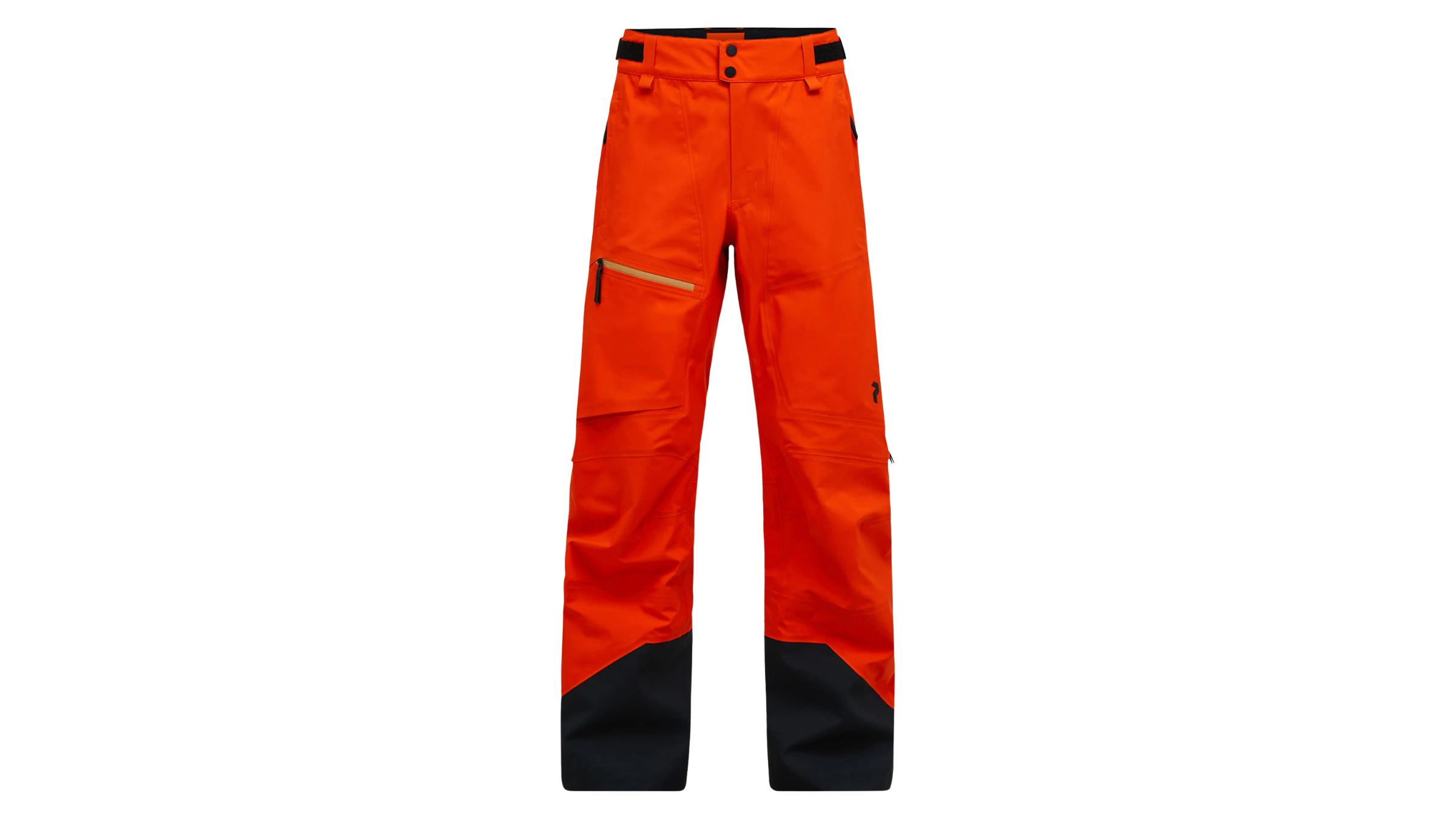
Sizing: XS-2XL (men’s; currently available in U.S. are S-XL)
Insulation: None
Weight: 1.2 lbs
Pros and Cons
+ Soft, supple fabric wears nicely
+ Easy size adjustment
– Narrow cut won’t work for all bodies
It’s the accumulation of little things that make these great men’s ski pants. The fabric–a mix of recycled polyamide face and a knit Gore-Tex membrane–is soft, supple, and lightweight. It repelled precipitation like we’d expect from Gore-Tex, the 70 Denier face is just heavy enough to deflect strong winds and cold air, and it breathed well enough that we never felt clammy, even ski touring in above freezing temperatures. (Shout out to the side leg vents.) Peak Performance wrapped burlier fabric all the way around the ankle area, adding durability to a high wear area. After a week of tele skiing there’s not a scratch.
The four pocket layout–hand pockets, thigh pocket, and a back pocket–meant we could access our beacon, phone, snacks, neck gaiter, and sunglasses without breaking stride on the skin track. But our favorite little feature is the waist band: Stretchy Velcro tabs made it easy to adjust the waist to our layering and had enough give so we didn’t feel constricted or exposed when we bent over or overindulged at lunch time. Overall the cut is on the narrower side, which along with being lightweight and breathable, makes the Alpine most at home far from the lifts. But the bomber protection means they won’t flinch at the odd resort day.
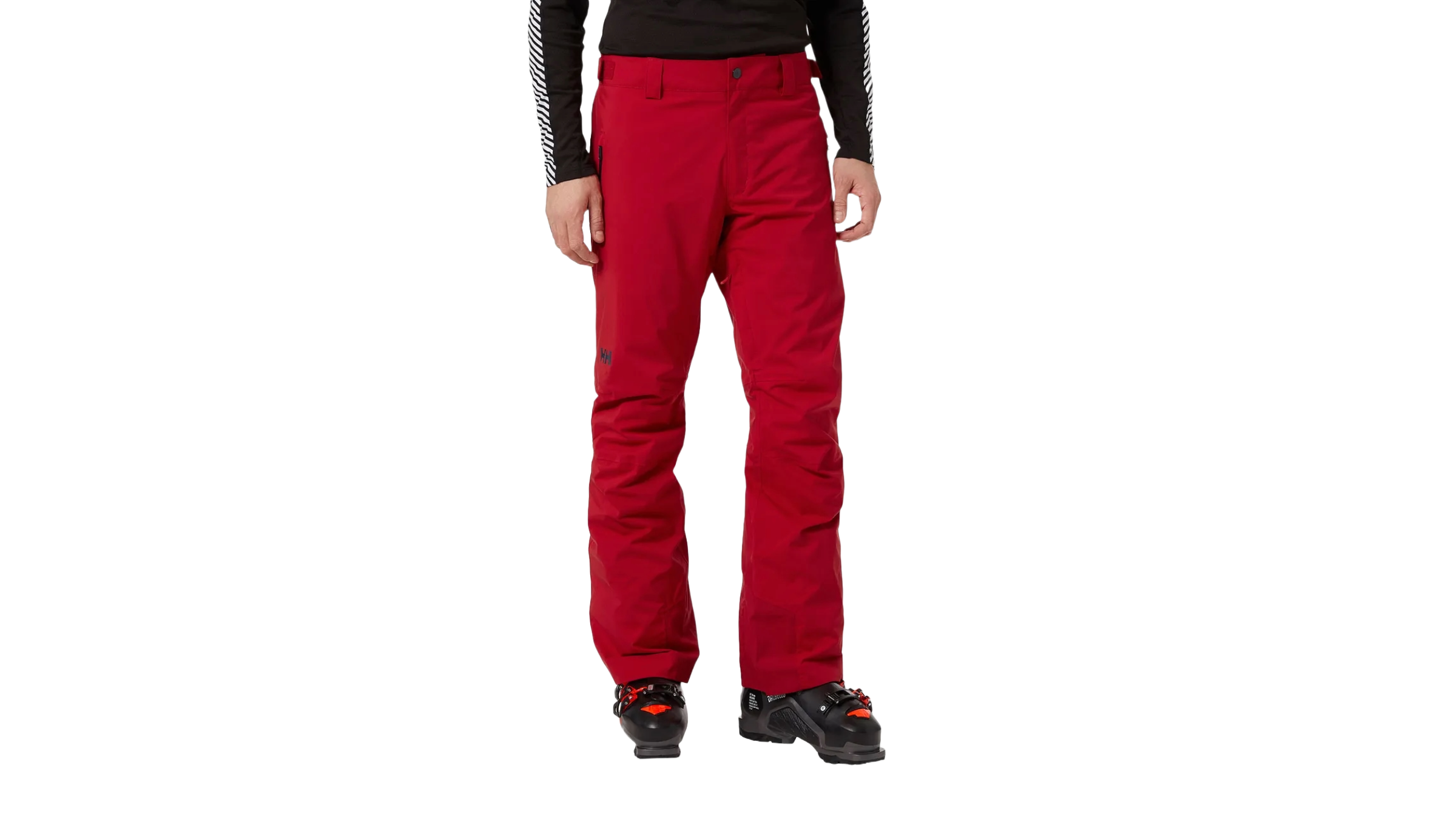
Paid Advertisement by Helly Hansen
Legendary Insulated Ski Pants
These iconic resort ski pants are best-sellers for a reason. Their performance is legendary, with HELLY TECH technology that makes them waterproof but equally as breathable, while 2-way stretch fabric gives you total freedom of movement. They’re the perfect pair for easy riders and heavy shredders, no matter your style on the slopes. And to get you even more ready for the season, you can get a free day of skiing at one of over 70 premiere resorts across Europe and North America as part of our SKI FREE promo when you buy these pants.
Best for Storm Skiing
Stio Figment Bib

Sizes: S-XXL
Insulation: None
Weight: 2 lbs
Pros and Cons
+ Excellent weather protection
+ Functional pockets
+ Durable
– Not enough waist adjustment for skinny dudes
Usually the first time wearing a bib pant involves a few stops to make adjustments. Not with the Figment. Adjusting the fit required just a quick set of the Velcro tabs on the suspenders and a pull on the waist belt. Done! Whether sitting, carving, or hopping down the steeps off Whistler’s Peak Chair, we appreciated the set-it-and-forget-it comfort, which felt like a custom fit thanks to articulation in the knees, gusseting in the crotch, and stretchy shoulder straps. Beyond fit, recycled fabric with a waterproof-breathable membrane was impenetrable, even sitting in a chairlift puddle for a 20-minute ride or snapping pics at the top of Jackson Hole’s tram in a gale.
The pocket layout was equally dialed for resort riding. The two hand pockets were accessible while sitting or standing, the oversized thigh pockets easily carried extra gloves, and the chest pocket on the high-riding upper could hold a beacon or other valuables. Thinner testers should shop carefully: A few found the Figment too baggy and others ran out of adjustment room to cinch the waist. Otherwise, these are dialed resort pants with reinforcements at the knee and seat for durability in high wear areas, and aren’t too warm or heavy for the occasional backcountry foray. After two seasons of use, they show just a couple scuffs around the cuff guard. These bibs are ready for years of playing in nasty weather.
Best Pant for Variable Weather
Head Kore Nordic Pant
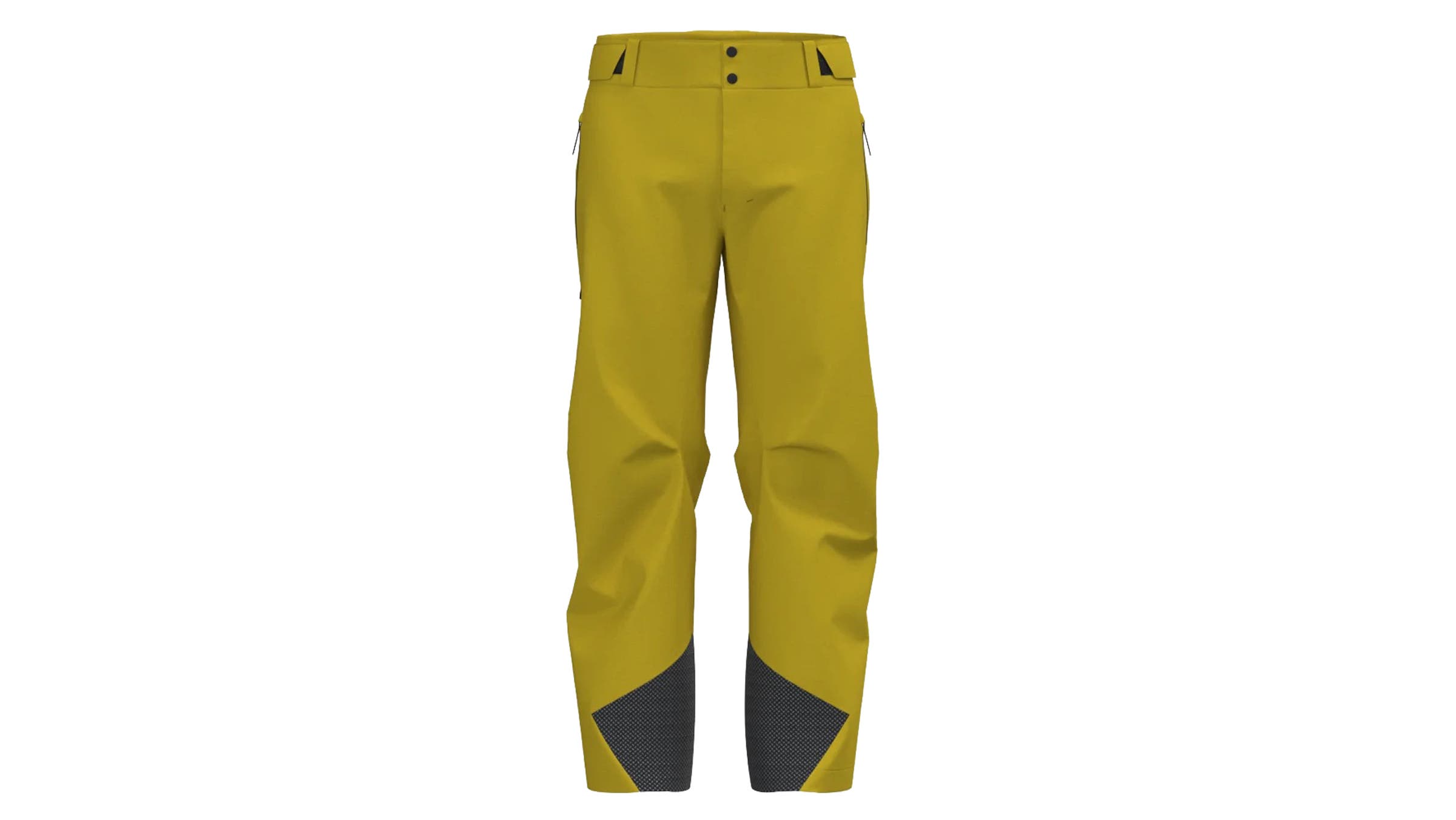
Sizes: S-3XL
Insulation: PrimaLoft Black recycled polyester
Weight: 2.2 lbs
Pros and Cons
+ Excellent venting
+ Very adjustable waist
+ Good warmth to weight
– Not best for wetter climes
It’s attention to detail that elevates the Nordic Pant. Take the cut guard on the inside cuff. It’s a seemingly utilitarian feature that Head takes to the next level by using a super tough polyamide, ceramic, and resin mix, and positioning the patch so it adds style and durability to the pant’s minimalist aesthetic.
The brand also took pains at the waist: “It is incredibly comfortable,” says a tester who skied in the Kore Nordic during a harsh Eastern Canadian winter. Fleece-lined and wide, the waistband boasts plenty of stretch, plus easy adjustability via Velcro tabs, optional belt loops, and suspender hooks. “I think just about everybody would fit into these pants,” said the 5’11”, 170 lbs tester.
The stretchy exterior Cordura material is waterproof and breathable, but might not stand up to the very soggiest of conditions—one tester had a damp butt after sitting on mist-covered chairlifts all day. Inside is 40 grams of recycled polyester insulation, which provides a decent amount of warmth without being overly bulky. Testers were impressed with the temperature range: In the same layers, they skied comfortably from below 10 degrees to above freezing, just cracking the zipper vents as the mercury climbed.
Best for Backcountry
Montane Nordes Softshell Pant
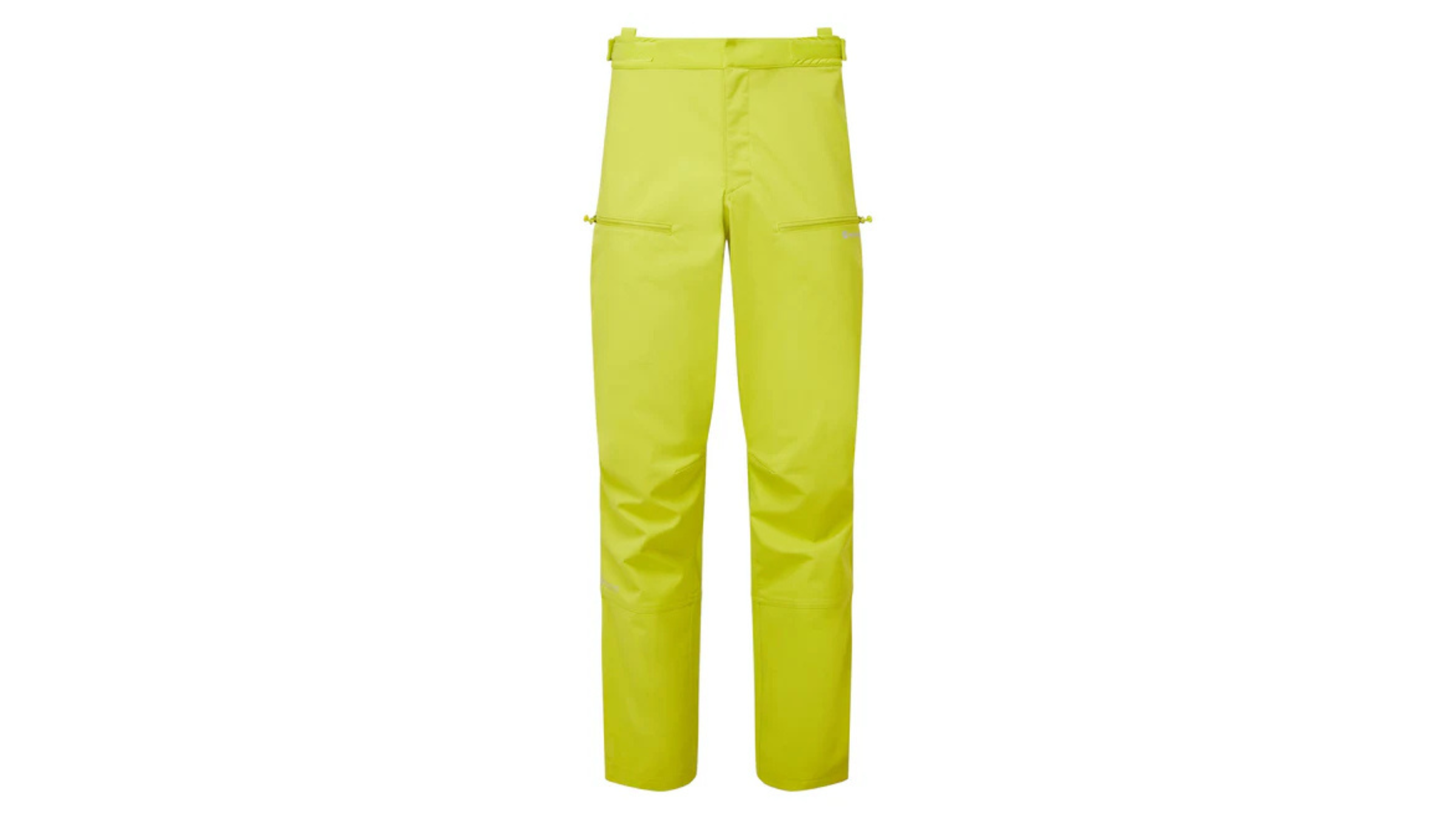
Sizes: S-XXL
Insulation: N/A
Weight: 1.23 lbs
Pros and Cons
+ Extremely breathable soft shell fabric
+ Stretchy fabric moves with you
– Not fully waterproof
The Nordes became our go-to ski pants for any touring adventures because of the highly breathable construction. Montane combined Gore’s Windstopper fabric on the front and butt of the pants with its own 75-denier soft shell material everywhere else. In most winter conditions the fabric provided plenty of protection from the elements–Windstopper is almost identical to Gore-Tex, but with no taping along the seams–and far superior for breathability compared to taped hard shells.
Touring in a melt-on-impact snow storm, lead tester Ryan Stuart stayed dry and didn’t overheat, like he would have if he was wearing Gore-Tex or the equivalent. On warmer days he opened the thigh-length side vents on both legs. Plus, the soft shell combo is super stretchy and never left skin exposed or restricted movement, even during an ice climbing escapade. The fit was easy to adjust with Velcro tabs or the addition of suspenders. What sealed it as a keeper for this category is the cut. While most soft shell touring kits fit snug, the Nordes sit a little looser, providing room to layer in really cold conditions. And blend in. “I didn’t feel geeky in the lift line,” reported Stuart, “which is great because it’s an awesome spring skiing pant, too.”
Best Fully-Featured Backcountry Bib
Mountain Hardwear Mythogen Gore-Tex Pro Bib
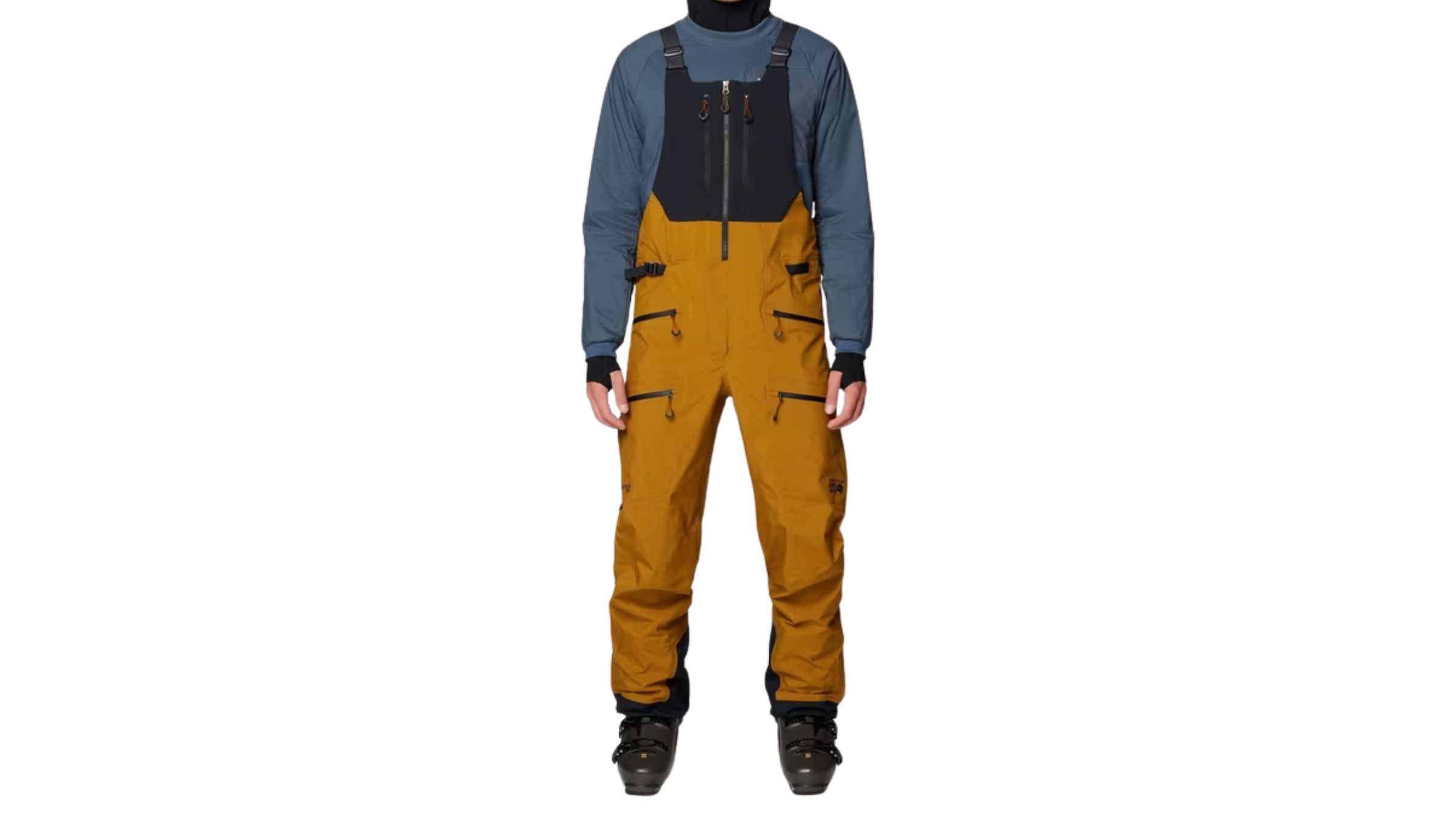
Sizes: S-XXL (men’s); XS-XL (women’s)
Insulation: None
Weight: 1.3 lbs
Pros and Cons
+ Plentiful pockets
+ Bombproof weather resistance
– Wider cut not ideal for ski touring
The Mythogen is a rare backcountry bib: lightweight and feature-rich. “It’s the fully loaded bib,” said one tester, a broadcast journalist and 75-day-a-year skier based in Calgary. The Mythogen’s rich selection of features and heavy-duty fabrics meant it felt optimized wherever he was turning. While backcountry skiing in Kananaskis Country, our tester barely needed a backpack. “So many pockets! I have places to store everything,” he said. There are six in total, including two, especially helpful, chest pockets on the vest-like bib portion. Oversized zipper pulls made them mitt friendly.
On a moist day at Panorama Mountain Resort the Gore-Tex Pro membrane proved its worth. “Every time I got on the chair, I was sitting in a slushy puddle,” a tester said. “At the end of the day, my long underwear was still dry. That was impressive!” Easy to adjust suspenders and an integrated belt helped dial in the fit, but did nothing to skinny the baggy legs, which he found cumbersome on the skin track. Otherwise we had no complaints and one big pro: the U-shaped relief zip in the back. “It should be a must for all bib pants,” he says. “Taking off bibs to poop is a pain. Well done MHW.”
How to Choose the Best Ski Pants
Consider these six factors when buying ski pants.
Waterproofing: Because pants spend more time in contact with the snow and potentially wet surfaces like chairlifts, waterproofing is more important than in jackets. Pick pants with a waterproof rating higher than 20,000 mm with sealed seams to prevent water from seeping in.
Breathability: While it’s crucial to keep water out, you also want your ski pants to be breathable, so sweat vapor doesn’t leave you wet from the inside. Look for pants with breathable membranes and venting zippers. For the resort, mesh backed vents are best, so you can ski with them open. For a dedicated, winter ski touring pant, nothing beats a soft shell for breathability.
Insulation: Consider the level of insulation you need based on the conditions you typically ski in and your personal preference. Uninsulated shell pants, paired with base layers, offer versatility. Insulated pants will always be warmer and are good for colder regions. 40 to 80 grams of synthetic insulation is a versatile warmth.
Fit and Mobility: Adjusting what you are wearing is part of the strategy for staying comfortable while skiing, which means being able to fine tune the fit of your outerwear is important. Look for pants with adjustable waistbands and shoulder straps. Articulated knees, gussets and stretchy materials help with mobility, which plays into fit. Finally check that boot gaiters and venting zippers are compatible with your boots and body shape.
Durability: Metal edges, kneeling in the snow, sitting on chair lifts, all take their toll on ski pants. To add longevity to your gear look for pants made from higher denier materials and reinforcements in key zones, like knees, seat and, especially, armor around the boot cuff.
Features and Extras: Consider additional features that may enhance your skiing experience, including the number and placement of pockets, integration with jackets and powder skirts and RECCO locators.
How We Test the Best Men’s Ski Pants
- Number of testers: 16
- Number of products tested: 33
- Number of ski days logged: more than 400
- Number of resorts skied during testing: 31-plus
Testing ski pants is all about vertical. The more time our testers spend sitting on chairs, turning on snow and hiking to the goods, the better judge they will be of whether a pant is good or great. To make our test team, testers have to log at least 30 days per season. We recruit from across the continent and try to find a variety of skier types and interests to give us as diverse feedback as possible. We send them each a couple pairs of men’s ski pants to test and ask them to at least put in a couple days with each item. We also ask them to hand each pair off to friends and ski buddies to try too. Once the flakes start melting we check back in with our test team to record their feedback on all the pants and find out which ones stood out from a winter of testing.
We take feedback on the new pants for this winter and compare it to the pants we’ve tested over the last few years. We check in with testers who are conducting long term reviews, see what other people are saying about the individual models and read customer reviews. With all the information in front of us we pick the top pants available right now. This list is alive: we test new products as they become available and check in with our test team to make sure we include the best available information.
Meet Our Lead Tester(s)
Lead tester Ryan Stuart likes nothing more than exploring new ski resorts while wearing new ski gear. Along with managing the ski pants and jacket reviews for Ski, Ryan is the technical editor at Ski Canada Magazine. He writes the mag’s buyer’s guides and runs their ski test. When he’s not on the slopes or traveling the world to write about skiing, Ryan’s at his desk on Vancouver Island. He’s a full time freelance writer focused mostly on the outdoor world and is working on his first book, a history of skiing in Canada.
Mark Kocij is a school principal in Toronto, Canada and an insider at Ontario’s unique, private ski clubs, where how you look is sometimes as important as how you ski. Always well dressed and looking sharp, he’s also a solid and dedicated skier, who doesn’t let a little wet weather keep him from the lifts.
In addition to building his own skis, our insatiable Salt Lake City tester Brady Newton (@b.flashskis) skis more than he works, but still manages to hold down a full time job as an environmental scientist.
A recovering teleskiing fanatic, Paul Karchut now mostly uses downhill gear, even in the backcountry. With or without a bent knee, he’s infamously hard on ski gear, including the jackets and pants he tests for Ski every winter. The Calgary-based broadcast journalist hosts a weekend show, which leaves plenty of time to chase storms across western Canada.